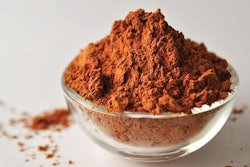
Broad utilization of phytogenics in animal feed results in different modes of action
Phytogenic feed additives represent an important class of natural feed additives used as natural enhancers of livestock performance and feed utilization.
Phytogenics consist of plant-derived, bioactive substances, including the whole repertoire of secondary plant metabolites. Due to this broad definition, they comprise a multitude of different substance classes, which offer a broad spectrum of modes of action.
Essential oils, saponins, flavonoids, mucilages, tannins, pungent substances, bitter substances — each influences an animals’ physiology with specific modes of action, for example, regulating the secretion of digestive juices and influencing intestinal nutrient transporters, antioxidant and anti-inflammatory effects, quorum sensing inhibition and gut wall protection.
Continuing phytogenic research
While initially met with skepticism, phytogenic feed additives are increasingly accepted in animal nutrition and production. Ongoing fundamental and applied research to uncover the diverse modes of action of phytogenics has been explored through standardized trials and independent evaluations. Such studies have also identified why and how phytogenic feed additives achieve the broad spectrum of claimed benefits.
Phytogenic feed additives represent a wide range of classes of plant-derived substances, each with individual modes of action. However, the research becomes even more complex when trying to understand how specific mixtures of phytogenics influence an animals’ physiology in their interaction.
Although further research on this topic is required, there is good evidence that the combination of different phytogenic substances may pronounce the effects of the single components.
 This table demonstrates the effects of dietary supplementation of essential oils, saponins and combinations on apparent ileal digestibility in 21-day-old broilers. (Reyer et al. 2017)
This table demonstrates the effects of dietary supplementation of essential oils, saponins and combinations on apparent ileal digestibility in 21-day-old broilers. (Reyer et al. 2017)Effect on broiler digestibility
A 21-day study of 144 Cobb 500 broiler chickens aimed to investigate the effect of a specific essential oil blend and a saponin mixture on apparent ileal nutrient and amino acid digestibility. Researchers randomly fed the birds four treatments and either supplemented a) no additive, b) an essential oil blend from star anise, rosemary thyme and oregano, c) a quillaja saponin mixture or d) a combination of the essential oil blend and the saponin mixture to the standard diet.
At the end of the trial, ileal digesta were analyzed using standard laboratory methods and the dry matter, crude protein, crude fat, crude ash, calcium and phosphorus were determined. Amino acids in the diets and the ileal digesta were measured by ion exchange chromatography.
The apparent ileal digestibility of lysine as the first limiting amino acid in most broiler diets was significantly increased with the supplementation of essential oils or the combination of both phytogenic additives to the feed and numerically increased in the saponin group compared to controls. Moreover, there was a numerical increase of lysine digestibility in birds fed on a diet supplemented with both phytogenic additives in comparison to birds fed on a diet with only one out of the two phytogenic additives.
Comparable results were found for numerous other amino acids like alanin, aspartic acid, glutamic acid, glycin, leucin phenylalanine and serin.
To unroll the mode of action responsible for these results on apparent ileal digestibility, the authors conducted in vitro analysis with Caco-2 cell culture investigating specific transporters (sodium-glucose transporter 1 [SGLT1] and peptide transporter 1 [PEPT1]) involved in jejunal glucose and amino acid uptake.
With total internal fluorescence microscopy (TIRF), it could be moreover demonstrated that the essential oil blend and the saponin mixture promote the recruitment of SGLT1 and PEPT1 to the cytoplasmic membrane, which is necessary for the absorption of glucose, small peptides and amino acids.
Diversity delivers results
With the help of structured and intensive research during the last decades, phytogenic feed additives turned out to be a potent tool to modify the physiology of livestock animals allowing to boost their performance.
Phytogenics comprise a broad spectrum of plant-derived substance classes, not restricted to essential oils only — this diversity makes research more complex, but it represents a huge potential for future development of innovative phytogenic feed additives. Systematic studies on nutrient digestibility already give proof that supplementing a combination of essential oils with saponins exceeds the beneficial effect of those phytogenic compounds in comparison to feeding the same compounds separately.
















